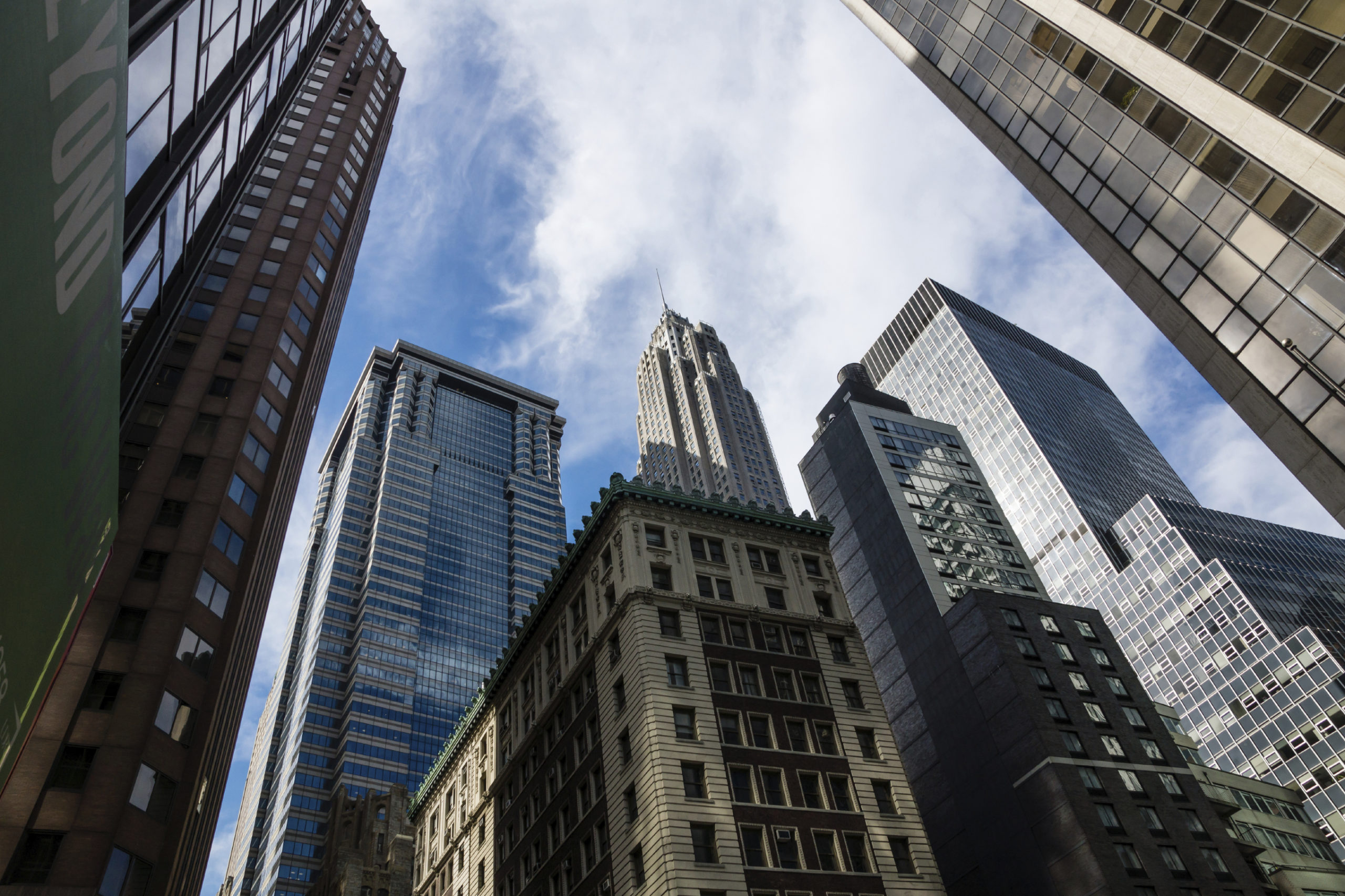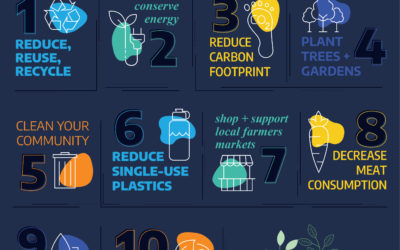5 Reasons Why Building Efficiency Matters
5 Reasons Why Building Efficiency Matters
The built environment in the U.S. is extremely inefficient. Consider these facts:
- Buildings consume roughly 40% of the total energy used in the U.S. and more than 70% of the country’s electricity, according to the U.S. Department of Energy.[1]
- The U.S.’s building stock each year uses more energy than any country except China and the whole of the U.S., according to the Rocky Mountain Institute.[2]
- New York City’s buildings account for nearly three-quarters of its greenhouse gas emissions, according to the NYC Office of Sustainability.[3]
These numbers show that the status quo is hard on building efficiency. Buildings will operate – and make money – whether they’re efficient or not. Many misconceptions exist as well, such as building-efficiency projects are expensive and complex. All in all, building efficiency is often overlooked, but it matters and here’s why:
1. Building Efficiency Curbs Energy Consumption
Our nation’s grid is under constant strain to power a continuously rising standard of living. Americans’ per-capita energy use is robust and growing,[4] especially with the burgeoning number of devices and gadgets that need charging. How can this energy consumption be curbed? A simple solution is to increase the efficiency of our wasteful building stock and transfer the energy savings to other sectors of the economy.
For example, if a building’s efficiency is increased by 30%, this energy that was previously wasted on antiquated building operations can now be reallocated to absorb increases in general consumption. The ability to curb grid-wide energy use will help the U.S. to become more energy-efficient, a dire need since Lawrence Livermore National Laboratory found the country wastes at least 61% of its energy input.[5]
2. Building Efficiency Supports Renewable Energy
Curbing energy consumption through building efficiency supports renewable-energy initiatives. With consumption diminished, less overall energy is needed from the grid and this reduction can be applied to pollution-generating plants powered by fossil fuels. Renewables can then step in and assume a larger piece of the energy-production pie, thus positioning them better in the overall mix.
Increasing the efficiency of buildings also supports sustainability and addresses the renewable-energy paradox, which occurs when consumption expands due to the energy source being renewable. Instead of focusing upstream on energy production, building efficiency focuses downstream on how energy can be expended more efficiently, thus getting to the root of the consumption challenge.
Renewables are critical to saving our planet’s future, but right now difficulties exist since renewables are dependent on weather conditions. For example, if the sun isn’t shining or the wind isn’t blowing during peak hours – when energy demand is highest – it’s impossible for renewables to meet that demand. And that’s where building efficiency can help.
Building efficiency is renewable energy’s biggest supporter since technologies exist right now that can stockpile renewable energy as it’s produced via battery, ice and thermal storage. This energy can then be used at any time, especially during peak demand, no matter the weather. This ensures renewable energy is available when needed and also lowers costs since off-peak production is maximized.
3. Building Efficiency Cuts Costs and Boosts ROI
According to ENERGY STAR, the average commercial building wastes about 30% of the energy used to run it, which means there’s considerable room to reduce energy use, and therefore cut costs. For example, with some easy fixes – such as adjusting temperatures and turning off lights – 10% of a building’s wasted energy could be saved right off the bat.[6]
And 10% is the tip of the building-efficiency iceberg. The Rocky Mountain Institute found that building owners and engineers could reduce energy costs by $1.9 trillion with building-efficiency investments of just $0.5 trillion (2010 present value). This translates into a 38% reduction in energy costs, a net savings of $1.4 trillion and an ROI that’s nearly triple the initial investment.[7]
4. Building Efficiency Bolsters Economic Growth
Efficient buildings are a boon to the U.S. economy. According to the U.S. Green Building Council, through 2013 green buildings provided jobs for nearly eight million U.S. workers and added $554 billion in GDP to the nation’s economy.[8] In addition, the U.S. Bureau of Labor Statistics found that “greener industries grow faster than the overall economy.”[9]
What’s more, not only do building-efficiency investments reduce operating costs, they also increase a building’s capitalization rate – a win-win scenario that significantly boosts overall value for owners. Moreover, investment-grade efficiency projects enable a building’s infrastructure to be upgraded by replacing older equipment that most likely is draining both energy and resources.
5. Building Efficiency Technologies Exist Today
We don’t have to wait for future technologies to improve the efficiency of our buildings – we can do it right now, and all within our existing infrastructure. The technologies available today include energy storage, free-cooling chillers, rainwater harvesting, analytics and optimization tools, water-quality enhancement, precise water filtration and many more.
Not only do these technologies exist presently, they can be applied to many areas within a building, such as the HVAC system, water management, vertical transportation, trash removal, lighting and bathrooms, to name a few. The technologies are innovative and energy-efficient, as well as cost-effective, and will generate considerable energy and cost savings immediately and over the long-term.
In Summary
Inefficiency abounds in the built environment, and the status quo says, “Do nothing.” But building efficiency matters since it curbs energy consumption, supports renewable energy, cuts costs and bolsters economic growth – and the technologies exist today. Building efficiency benefits everyone, from building owners, to engineers, to society as a whole – so much so, in fact, that we believe this is just the start of the conversation.
[1] U.S. Department of Energy; About The Building Technologies Office; http://energy.gov/eere/buildings/about-building-technologies-office.
[2] Rocky Mountain Institute; The Science Behind Reinventing Fire: Buildings; http://www.rmi.org/Buildings.
[3] NYC Office of Sustainability; The New York City Carbon Challenge; http://www.nyc.gov/html/gbee/html/challenge/mayor-carbon-challenge.shtml.
[4] Lawrence Livermore National Laboratory; Americans using more energy according to Lawrence Livermore analysis; https://www.llnl.gov/news/americans-using-more-energy-according-lawrence-livermore-analysis.
[5] CleanTechnica; U.S. Wastes 61–86% Of Its Energy; http://cleantechnica.com/2013/08/26/us-wastes-61-86-of-its-energy/.
[6] ENERGY STAR; Improve energy use in commercial buildings; http://www.energystar.gov/buildings/about-us/how-can-we-help-you/improve-building-and-plant-performance/improve-energy-use-commercial.
[7] Rocky Mountain Institute; The Science Behind Reinventing Fire: Buildings; http://www.rmi.org/Buildings.
[8] U.S. Green Building Council; A Green Economy is a Growth Economy: How Green Building Supports Job Creation, Workforce Transformation and Economic Recovery; http://www.usgbc.org/Docs/Archive/General/Docs10759.pdf.
[9] Economic Policy Institute; Counting up to green: Assessing the green economy and its implications for growth and equity; http://www.epi.org/publication/bp349-assessing-the-green-economy/.
Insights
Earth Day 2024
Earth Day— the HIGHMARK Way It’s April 22, a day that marks the 54th anniversary of the modern-day environmental movement—otherwise known as Earth Day. This holiday comes and goes each year and many...
World Water Day 2023: Accelerating Change via Building Efficiency
World Water Day 2023: Accelerating Change via Building EfficiencyFocus of World Water Day 2023: Accelerating Change Celebrated annually on March 22, World Water Day's theme this year is...
LL97 Proposed Rules & the Building-Efficiency Technologies To Achieve Them
LL97 Proposed Rules & the Building-Efficiency Technologies To Achieve ThemHere's what you need to know about Local Law 97's proposed rules (thanks to Urban Green Council), and the...
Technologies
Resources
About Us
© 2023 HIGHMARK | Building Efficiency




